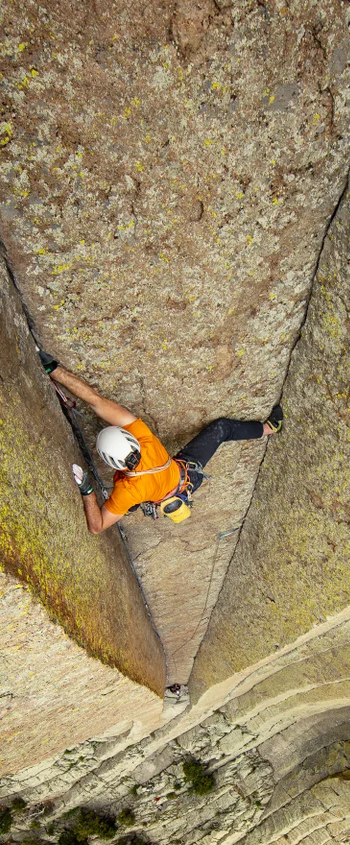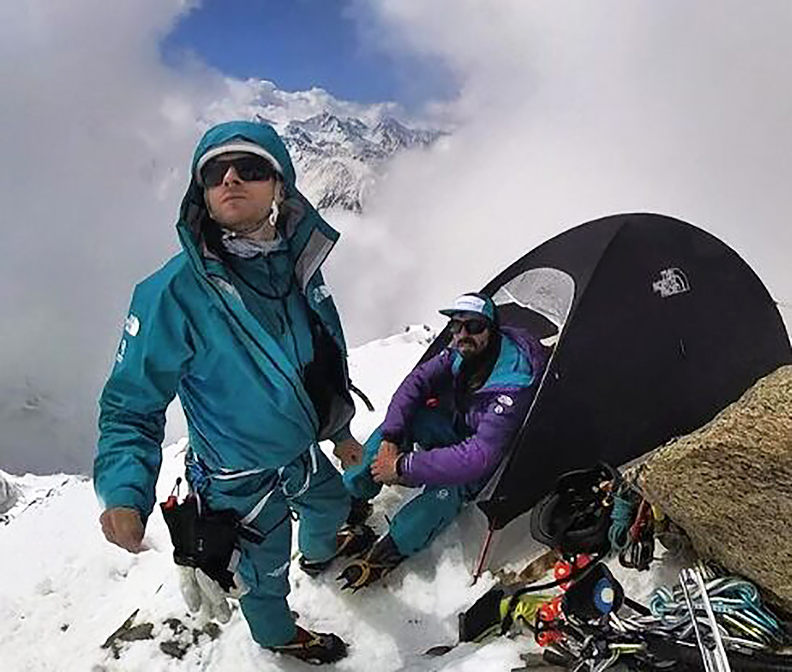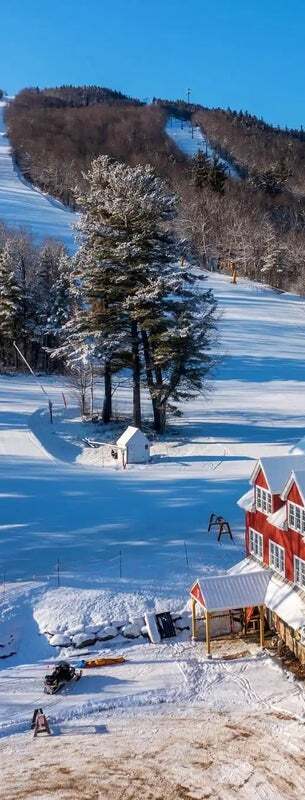Discovering the Untouched Slopes: Why Skiing in Kyrgyzstan Should Be on Your Bucket List
An Unforgettable Adventure in the Jyrgalan Mountains
Skiing in Kyrgyzstan offers a unique and challenging adventure. The destination is Jyrgalan, a remarkable place that every backcountry skier should have on their bucket list.
Reaching Jyrgalan: A Journey into the Unknown
Our journey began in Bishkek, the capital of Kyrgyzstan, greeted by a gray, drizzling sky. The atmosphere was reminiscent of the Soviet era, with mixed feelings about politics and the situation in Ukraine. The road to Jyrgalan took us through captivating landscapes rich with a history that bridges Asia and Europe.
Jyrgalan: A Small Town with Endless Possibilities
In Jyrgalan, we settled into the Alakol-Jyrgalan Guest House, surrounded by the complex but comforting aromas of coal stoves, roasted garlic, and livestock. This small former mining town, once home to about 1,000 residents, offers stunning natural beauty and perfect skiing terrain. The local people are friendly, and the natural scenery is breathtaking.
The Skiing Experience: From Challenges to Pristine Beauty
Our first day of skiing offered perfect conditions, with heavy snowfall from dawn till dusk. Skiing here demands high skills and a deep understanding of local conditions. Our guide, Andrey Erokhin, an IMFGA-certified instructor, was meticulous in ensuring our safety and delivering an exceptional experience.
Exploration and Adventure
Discovering the Valleys and Slopes
Jyrgalan offers limitless skiing opportunities, from gentle slopes to steep technical descents. On our first day, we visited an area called “The Spider,” a series of steep parallel drainages. Despite tearing my ACL, the beauty and thrill of the place made it worth every moment of pain.
Skiing on Horseback
Adding a unique twist to our adventure, we used horses to reach remote skiing areas. Despite my knee injury, this horseback journey was an unforgettable experience.
Finding New Lines
Exploring new slopes requires effort and adventure. My favorite run was in an area known as “Austrian Kiss,” where the skiing was so fantastic that it could bring about a euphoric embrace. The valley mainly opens up through ski touring, covering over 40 miles in a week. For those looking for assistance, a few snowmobiles and two snowcats are available for hire.
Local Culture and Hospitality
Traditional Cuisine
Jyrgalan lacks traditional restaurants, but we enjoyed incredible meals at our guest house. Our chef, Nurgul, prepared delicious local dishes, from buckwheat porridge and homemade cakes for breakfast to traditional soups and mains for dinner. There was no need for the emergency Clif Bars we packed.
Immersing in Local Traditions
One day, Nurgul prepared a traditional Kyrgyz feast in a clay oven, offering some of the best lamb I’ve ever tasted, accompanied by shots of Kyrgyz whiskey and local lager, Arpa. This remote trip is not for the faint-hearted, but the seclusion, unlimited skiing, and unbeatable cultural experience make it the perfect backcountry ski trip.
Conclusion
Skiing in Kyrgyzstan’s Jyrgalan Valley is an unparalleled adventure. The combination of pristine slopes, unique cultural experiences, and the sheer beauty of the Tian Shan mountain range makes it a must-visit for any serious skier. Despite the challenges, the rewards of this remote and breathtaking location are well worth the journey.
Source: https://www.skimag.com/adventure/why-skiing-in-kyrgyzstan-is-bucket-list-worthy/
Learn more: https://www.adventurefilm.academy/
Climbing a via ferrata in Corsica: where rugged mountain adventure meets the Mediterranean
“I think I found the spicy part!”
I’m yelling to the climber behind me as I find myself stretched out around a rocky protrusion, my hands clinging to iron rungs on either side of the granite nose while I perch on tip toes in my hiking boots on small metal ledges. I wait here a minute, arms burning, for the climber ahead to make his next move so I can move on to find a more comfortable perch.
Below me, the cliff drops away to a distant gorge floor some two thousand feet down, and while I have butterflies in my stomach, I’m grinning widely. I’m well secured, via two carabiners that extend from quickdraws on my climbing harness to a metal cable that is bolted into the rock. Rather than the trad climbing I’ve been doing for years back in the Rockies, where one wrong placement of gear can mean a long, lonely fall, this is a via ferrata; in other words, a way to enjoy the thrills and exposure of technical rock climbing without quite so much risk. In fact, the risk is so low there may even have been a glass of rosé earlier at lunch.

The via ferrata de Tolla is one of several such routes here in Corsica, the mountainous island neighbor to Sardinia in the Mediterranean that lies some 150 miles southeast of Nice. After a half hour or so of rocky but easy descent, we traveled across a gorge via a lengthy and exhilarating zipline ride and are now about halfway through a 90-minute climb back to the trailhead. When I look over my right shoulder, I’m treated to views of the stunning Lac de Tolla and its impressive hydroelectric dam. To my left, the sparkling Mediterranean beckons between the mountain peaks. In just about every way, the moment perfectly sums up the promise of Corsica, where rugged adventure meets a laidback beach vibe.
I arrived on the island the day before for a press trip with The North Face, by way of a stopover in Amsterdam and another in Nice. Upon arriving at my beachfront hotel, I washed away the funk of air travel with a dip in the sea, which even this early in the season was welcoming. In the afternoon, we drove around the bay to Ajaccio, the island’s capital, where we discovered all the hallmarks of Mediterranean vacations – pastel tones, whitewashed seafront hotels, bustling cafes, swaying palm trees and sun-drenched promenades.
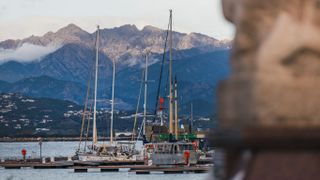
The city has historical significance as well as sandy beaches – it’s the birthplace of Napoleon. However, we opt for the hiking trail over the museum, finding a path where luscious cacti hang heavy over the trail and red sandstone rock formations make tempting diversions for nimble climbers. As we climb to a rocky outcrop with views of the town, local trail runners pass us in scores, getting their evening workout in before dinner.
After a nine-kilometer circuit to stretch our legs, we head to a cozy restaurant in the port, where an open fire crackles against the cool spring weather and friendly waiters ply us with zesty local wines, buttery St Peter’s fish served simply with tomatoes and zucchini and gooey chocolate fondant. Though everyone is speaking French, the easygoing mood has more than a hint of Italian influence; we are, after all, closer to Italy than France and it shows.
In the morning, we hit the road again, but this time turn inland away from the colorful coastal towns. Within minutes, we’re climbing on a steep, winding mountain road, passing crumbing famhouses. The classic Mediterranean beach vibe falls away, in its place, a decidedly verdant landscape emerges, one where lush forests adorn sawtooth mountain ridges.
Corsica is home to more than 600 miles of coastline and 200 beaches, but to come here and simply sunbathe would be a crime, for Corsica is a land of epic adventure. It holds the title of the most Mountainous island in the Med, with its tallest peak, Monte Cinto, standing well above Mount Washington and Ben Nevis at an impressive 8,878 ft. The most intrepid foot travelers can cross these mountains via the GR20, a 112-mile hiking trail that’s widely considered to be the toughest long-distance trail in Europe.
Nearly two-thirds of the island is made up of mountains formed of granite 250 million years ago and today, some 40 percent of Corsica is given over to stunning Corsica Regional Nature Park. In the winter months, the lifts turn at three ski resorts and as we arrive, we can see a light dusting of new, late-season snow that fell overnight.
We choose mountain bikes over skis, but not before a fine al fresco breakfast of sharp Corsican sheep’s cheese, crusty bread and ripe tomatoes by the pristine lake. Bellies full, we hit a wide but rutted-out trail, cruising over rolling hills with breathtaking views, at one point stopping to remove our shoes and cross a rushing river, our bikes on our backs.
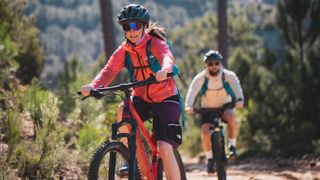
Afterwards, we cool off with a breathtakingly icy dip in the lake and lunch before it’s time to take on the via ferrata. It’s my first time on such a route and though I’m initially skeptical that such a secure climbing experience can really be fun, I’m soon completely taken with this intoxicating activity, which offers thrill and challenge even to experienced climbers.
By late afternoon, hot and happy, we’re back at the hotel and it’s time for another long dip in the sea before dinner. Falling into bed with the sound of the waves lulling me to sleep, hard to believe we’ve fit so much into just 36 hours. But that’s the beauty of Corsica – the island where you can sail, bike, hike and climb all in a single day.
Source: https://www.advnture.com/features/corsica
Learn more: https://www.adventurefilm.academy/
The 10 Most Gorgeous Solo Hikes
Heading out on an adventure and knowing that you are solely in control of where you camp, when you stop, and what you eat can be a thrilling feeling. “Solitude is so rare in this day and age that it can be really powerful if you seek it out purposefully,” says Amy Rathke, Environmental Stewardship Coordinator for the National Outdoor Leadership School. “Gear preferences, food preferences—ultimately, the trip is yours. If you want to sit by an alpine lake and sit in the sun and read your book in the middle of the day, you don’t have to answer to anyone else. ” These ten perfect hikes, from a few miles to a few weeks long, are waiting for you.
Lost Lake Trail, Seward, Alaska
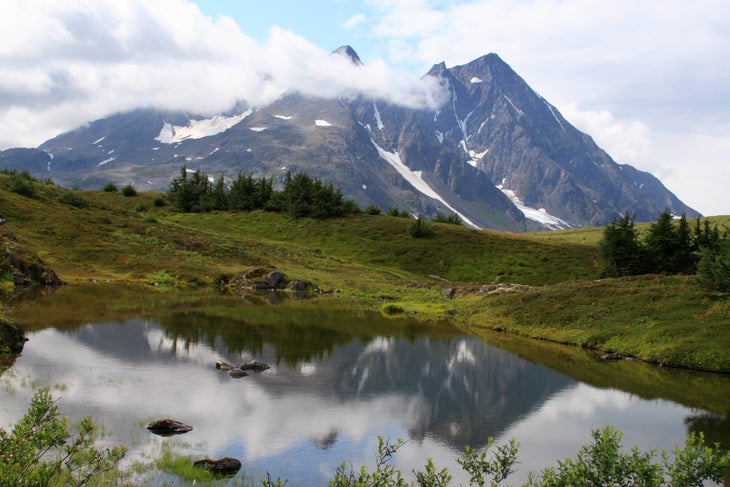
If you’re new to solo backpacking, opt for a one- or two-night stay at Lost Lake. The 14-mile roundtrip hike starts in a spruce forest that opens up into lush meadows, followed by hemlock groves and mountain views. There are off-trail hiking opportunities if you feel like exploring further, but use common sense: there may be no other hikers for miles, and snow can linger until July. [image: Frank Kovalchek / Flickr]
John Muir Trail
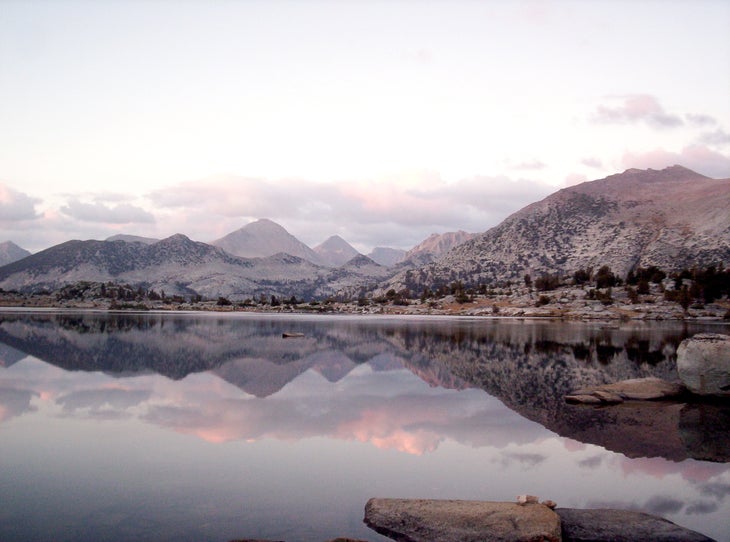
Said to be the finest mountain scenery in the US, this 211-mile trail should definitely be on your bucket list. It runs mostly in conjunction with the Pacific Crest Trail, and often has mild, sunny weather. You will need a wilderness permit, but it’s worth it to venture through Yosemite, John Muir Wilderness, Kings Canyon, and Sequoia National Park. [image: Rick McCharles / Flickr]
Fall Canyon, Death Valley, California
Don’t be scared off by the name. Instead, let Death Valley’s key features entice you—it’s the driest, hottest, and lowest place in North America. The trails are rough and unmanaged, so definitely take a GPS device and bring plenty of water. If you want true isolation, avoid the weekends, but target April and October for prime weather. Fall Canyon offers a wealth of exploration possibilities near Titus Canyon.
Teton Crest Trail, Grand Teton National Park, Wyoming
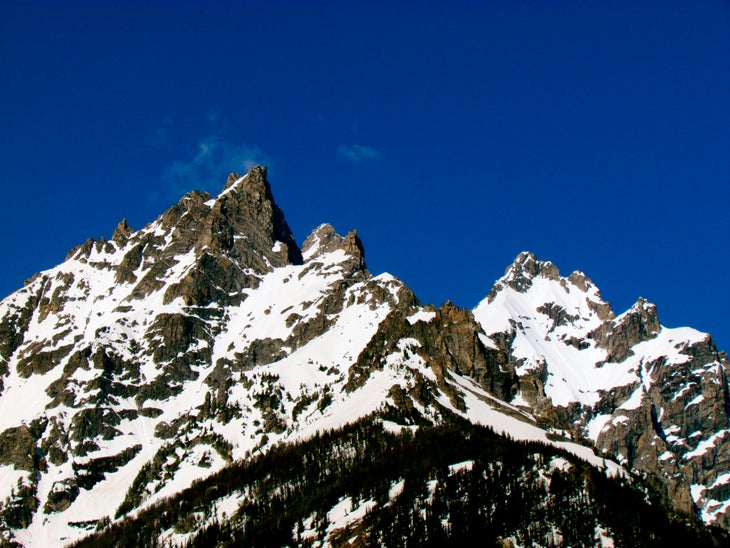
If you are ready for a longer solo adventure, the 37-mile, six-day Teton Crest Trail is one of Rathke’s favorites. It’s one of the park’s signature hikes and delivers alpine lakes, views of the famous craggy summits, and a trip over Hurricane Pass where you can see all three Tetons in perfection. This is a moderate backpacking trip, but can easily be done solo—park at the Leigh Lake Trailhead and take the tram to start at the Granite Canyon trailhead. [image: Jeff Gunn / Flickr]
Timberline Trail, Mt. Hood National Forest, Oregon
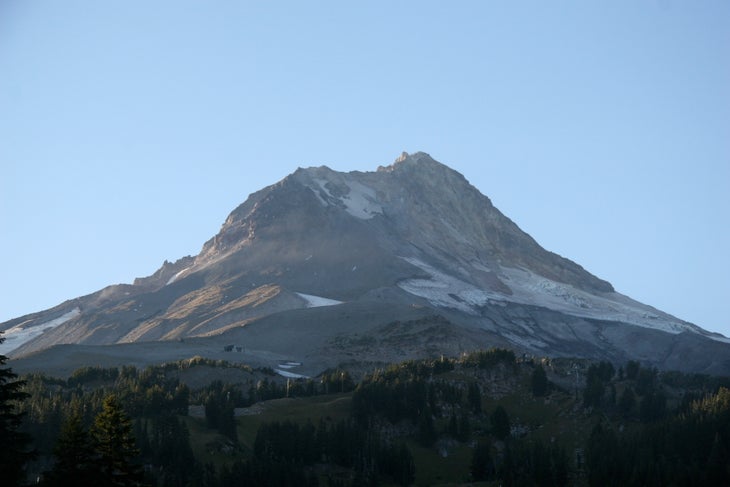
For a multi-day solo backpacking trip, take the 36-mile trek around Mt. Hood. You start and end at Timberline Lodge trailhead, and do need a permit in the summer, though they are free. This is a more strenuous hike that will test your limits, but you’ll get a good variety of solo hiking as well as some populated areas and campsites, if you’re in need of some emergency socialization. [image: Jesus Corrius / Flickr]
Lake Katherine, Pecos Wilderness, Santa Fe, New Mexico
Start at Ski Santa Fe, follow the Windsor Trail up to the well-marked path leading to Lake Katherine, and don’t forget your fishing pole. It’s the largest and deepest lake in the Pecos and sits just below Mount Baldy, which you can veer off and climb, too. There are plenty of trails to make this a loop hike as well, offering connections to the Windsor to Lake Peak, Deception Peak, and Raven’s Ridge.
Wilcox Pass, Jasper National Park, Alberta, Canada
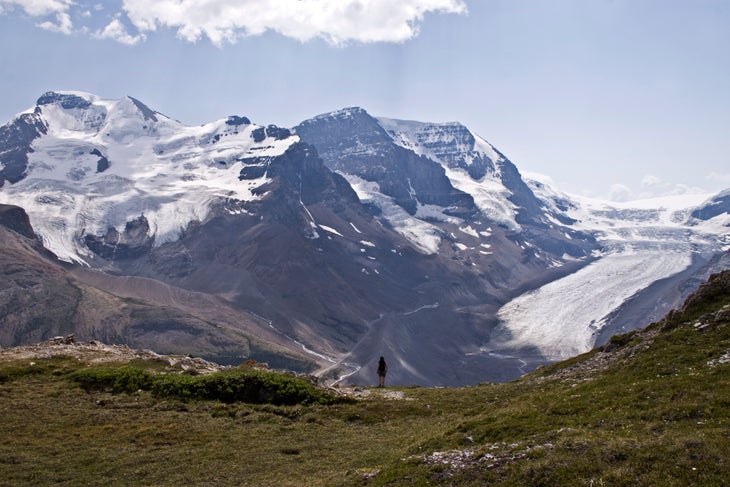
On some hikes, you just want to take in the beauty without being rushed by co-hikers. Wilcox Pass provides views of the Columbia icefields along with the Athabasca glacier, and the glaciated Mount Andromeda, Snow Dome, and Mount Kitchener. Take your time viewing the glaciers, then continue to the open meadows to spy bighorn sheep. [image: Brendan Bell / Flickr]
Delicate Arch, Arches National Park, Moab, Utah

Not only are all of the hikes in this area highly recommended, the small-town of Moab is friendly and welcome to all adventurers. Canyonlands National Park is nearby, but Arches is easier to navigate with better marked trails. Both are popular with hikers and mountain bikers, but you can still easily get away to appreciate the solitude. The Delicate Arch hike is only 3 miles roundtrip, but can take about two to three hours. There is no shade, so make sure you pack plenty of water and sunscreen. [image: Ronnie McDonald / Flickr]
Cabot Trail, Cape Breton Highlands National Park, Nova Scotia, Canada

The 185-mile Cabot Trail covers the northern tip of Cape Breton Island, consistently rated one of the top destinations in North America. With more than 25 trails to explore, you can easily do a variety of hikes and spot plenty of wildlife, too. [image: Andrea Schaffer / Flickr]
Springer Mountain to Three Forks, Appalachian Trail, Ellijay, Georgia
This southernmost, 8.6-mile stretch of the Appalachian Trail covers a variety of terrain, like mossy creeks, pine, rhododendron, and plenty of wildflowers before heading to the summit of Springer Mountain. The out-and-back trail has parking lots on both ends and isn’t very strenuous—you can take the time to reflect and enjoy a lush hike by your lonesome.
How to Safely Hike Alone
A solo hike can also lead you into dangerous situations, so prepare for the worst. “The top thing when you are considering any trip, but especially when you are going out alone, is to have good first aid training because you are going to be handling any emergency situations by yourself,” says Rathke. Along with first aid, know the area that you are going to. Are there grizzlies? What’s the weather supposed to be like? Have a solid understanding of the place before you embark, Rathke says. Unfortunately, there’s a human factor, too. Rathke warns to be wary of any fellow hikers that are simply creeping you out. If your gut is telling to you to be cautious of someone, play it safe and pitch your tent among other campers or hike alongside new friends.
Before you head out, leave a detailed trip plan of where you are going, and when you will be back. “I like to set a freak out time,” Rathke says, “so if whatever that time is approaches, and whoever you left your plan with haven’t heard from you, they know specially what to do at that point, whether it is to contact search and rescue or drive to the trailhead and retrace your steps.”
Sometimes, getting over the mental hump of being alone for days at a time is a challenge of itself. Rathke recommends bringing a book or an iPod and savoring the uninterrupted hours to read or listen to music. You might also consider taking a few items you might normally take on a group hike, like a GPS device for any challenging situations.
Source: https://www.backpacker.com/trips/10-hikes-to-do-solo/?scope=anon
Learn more: https://www.adventurefilm.academy/
Inside the mind of an Adventure Bike Rider
Given the choice between wing flying over the Grand Canyon or watching a festival on the beach with locals, which would you pick? It seems the former is gaining the most traction with tourists or would be travellers than ever before.
For wing flying, read ‘motorcycle adventure riding,’ and you suddenly become part of a new survey in the adventure travel market in the Americas and Europe. The jump in market revenue, according to a study by the George Washington University on behalf of an influential travel trade association, went from $89 billion in 2009 to $263 billion in 2013. Kite surfing and paragliding are considered hard adventure; canoeing and hiking are a little softer. Motorcyclists are definitely in the tougher part of the survey.
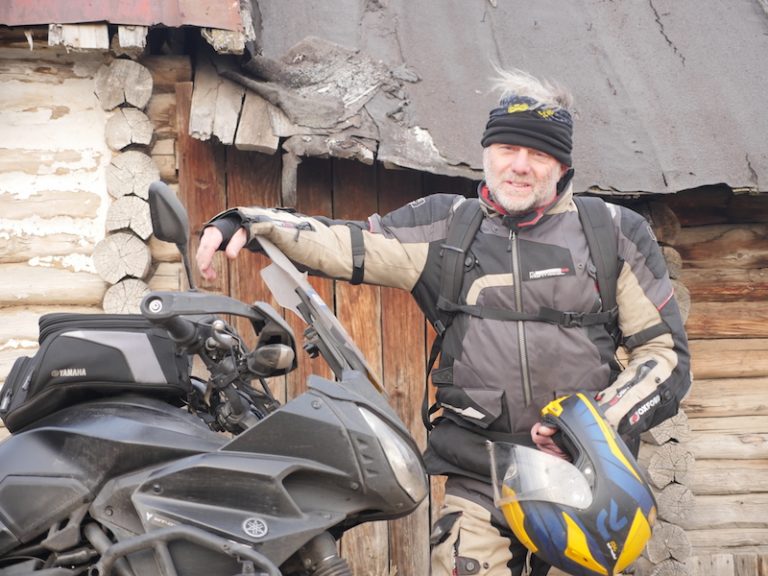
However, I contend the adventure bike rider is a unique and specific category. The average adventure traveller is male, around 36 years of age with a four-year degree and an average income exceeding £44,000. 48% are single; they spend an average of just under £1,000 per trip and around £280 on gear each year. Spot the differences to the people in the sport we all know? Trips start at that price but can include selling the house, and as for gear, £280 buys you a less than top of the range helmet. What about the bike?
Speaking personally, 95% of clients on my own motorcycle tours are married and are in the 50+ age range. Equally, I notice the relatively fewer independent travellers who fill the pages of ABR (both in print and online) so bravely, are similarly aged, have had to deal with some extrication from family life and, in a minority of cases, have sold everything they have to provide the income they require to do that one big, possibly ultimate, long term journey.
Motorcyclists are adventurers just by putting their leg over a bike. But when you extrapolate where some of us travel to, the dynamics involved are off the scale.
The proliferation of new models of adventure bike, an advance supported and instigated in some ways by companies such as Touratech, Kriega, Metal Mule and Adventure Bike Rider itself, has dominated the motorcycle industry of recent years. If adventure motorcycling is still the hot topic in most bikers’ minds, what exactly is inside the adventure bike rider’s head?
Adventure and non-adventure travellers agree climate and natural beauty are two of the most important factors when choosing a destination. This fits with how riders I know prioritise where they wish to ride. A forest scent, a mountain view and a few physicals around hairpin bends veritably puts a bit of poetry into our hearts.
There is a third consideration. Adventure travellers select activity options in a destination – the Andes, the Alps, a spin with Eagle Rider across Route 66 – whilst non-adventurers chose friends and family as their top priority. I have a hunch that the adventure bike rider cleverly chooses their family and friends from a select group of individuals, and we know who they are.
They’re assertive, headstrong, brave to the point of being courageous, foolhardy, have a dubious taste in heavy metal music whilst compulsively showing attention to detail, and are known to us all as motorcycle enthusiasts! Enjoy your riding, you impulsive people!
By AJ Daly
For more information and details : https://www.adventurebikerider.com/article/adventure-bike-rider-motivation/
WHAT is the adventure film festival:-
The Adventure Film Festival is all about helping those that adventure to profit from their bliss.
The Adventure Film Festival is all about helping those that adventure to profit from their work.
The Adventure Film Festival is all about helping those that adventure to profit from their videos.
The Adventure Film Festival is all about helping those that adventure to profit from their expertise.
The Adventure Film Festival is a global online adventure film competition.
IF you have an adventure film worthy of global recognition = submit it.
IF you are an adventure film maker = build your story / build your brand; it is our job to help you build your business.
Adventure Film makers / our stars – we want to help you develop our global industry…

